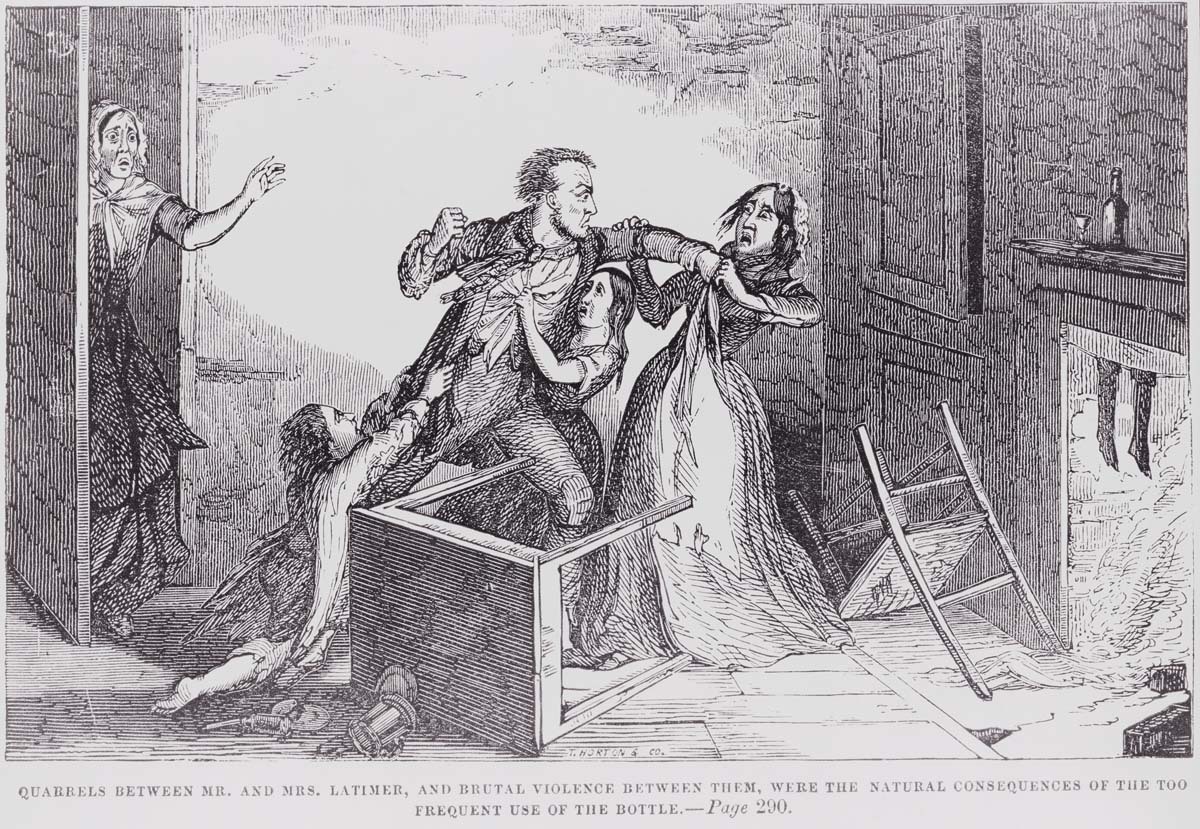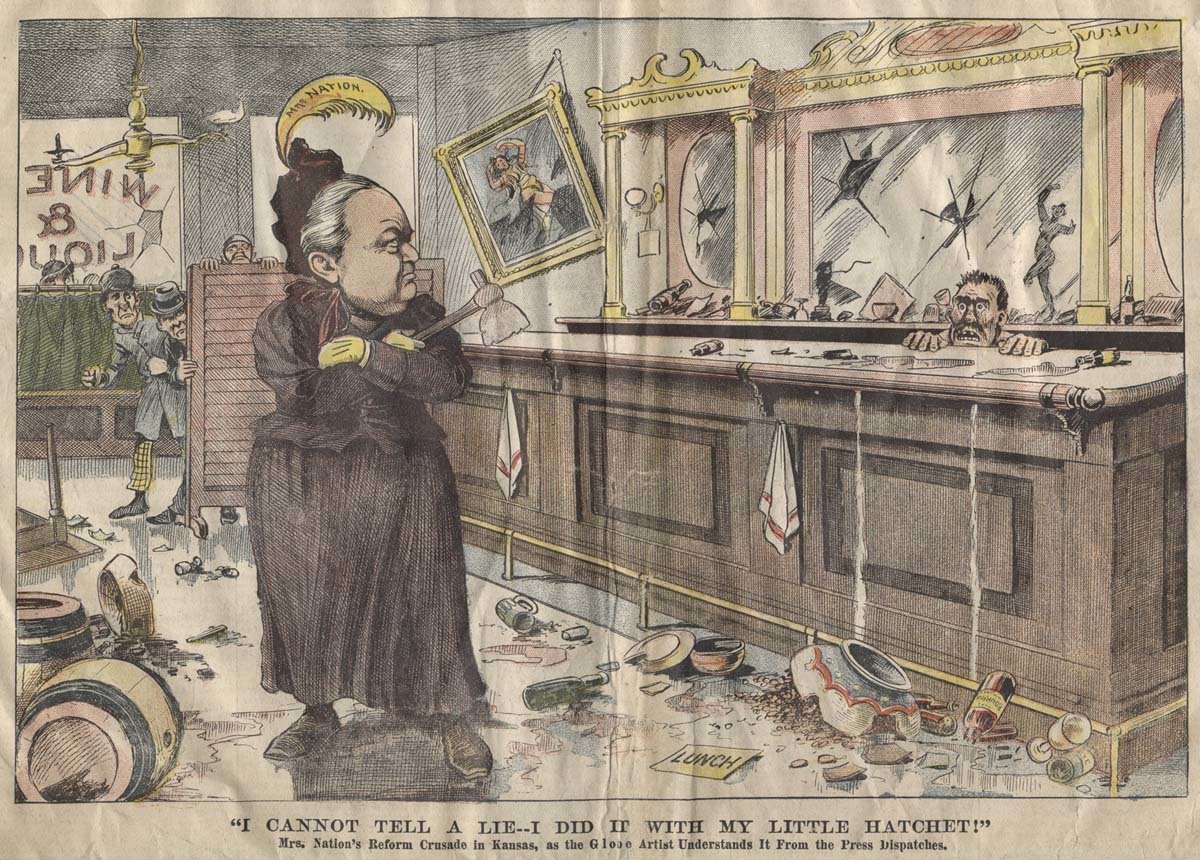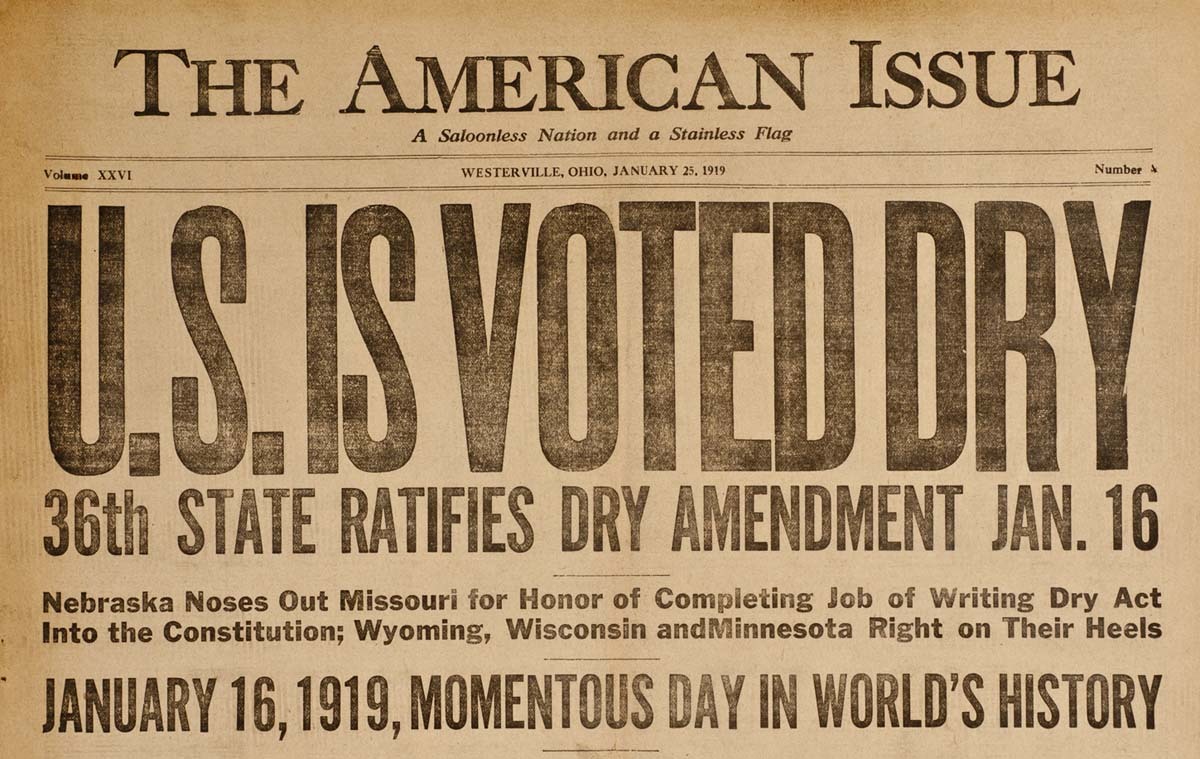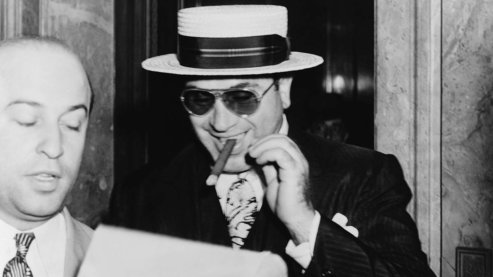Roots of Prohibition
By 1830, the average American over 15 years old consumed nearly seven gallons of pure alcohol a year – three times as much as we drink today – and alcohol abuse (primarily by men) was wreaking havoc on the lives of many, particularly in an age when women had few legal rights and were utterly dependent on their husbands for sustenance and support.
The Temperance Movement
The country's first serious anti-alcohol movement grew out of a fervor for reform that swept the nation in the 1830s and 1840s. Many abolitionists fighting to rid the country of slavery came to see drink as an equally great evil to be eradicated – if America were ever to be fully cleansed of sin. The temperance movement, rooted in America's Protestant churches, first urged moderation, then encouraged drinkers to help each other to resist temptation, and ultimately demanded that local, state, and national governments prohibit alcohol outright.
Excerpt from "Last Call: The Rise and Fall of Prohibition" by Daniel Okrent

"THE STREETS OF San Francisco were jammed. A frenzy of cars, trucks, wagons, and every other imaginable form of conveyance crisscrossed the town and battled its steepest hills. Porches, staircase landings, and sidewalks were piled high with boxes and crates delivered on the last possible day before transporting their contents would become illegal. The next morning, the Chronicle reported that people whose beer, liquor, and wine had not arrived by midnight were left to stand in their doorways "with haggard faces and glittering eyes." Just two weeks earlier, on the last New Year's Eve before Prohibition, frantic celebrations had convulsed the city's hotels and private clubs, its neighborhood taverns and wharfside saloons. It was a spasm of desperate joy fueled, said the Chronicle, by great quantities of "bottled sunshine" liberated from "cellars, club lockers, bank vaults, safety deposit boxes and other hiding places." Now, on January 16, the sunshine was surrendering to darkness."
Women's Christian Temperance Union

After the Civil War, as millions of immigrants – mostly from Ireland, Germany, Italy, and other European countries – crowded into the nation's burgeoning cities, they worked hard to assimilate while simultaneously retaining cherished habits and customs from their homelands. The brewing business boomed as German-American entrepreneurs scaled up production to provide the new immigrants with millions of gallons of beer. In the 1870s, inspired by the rising indignation of Methodist and Baptist clergymen, and by distraught wives and mothers whose lives had been ruined by the excesses of the saloon, thousands of women began to protest and organize politically for the cause of temperance. Their organization, the Women's Christian Temperance Union (WCTU), became a force to be reckoned with, their cause enhanced by alliance with Susan B. Anthony, Elizabeth Cady Stanton, and other women battling for the vote.
By the late 19th century the WCTU, led by the indomitable Frances Willard, could claim some significant successes – it had lobbied for local laws restricting alcohol and created an anti-alcohol educational campaign that reached into nearly every schoolroom in the nation. Its members viewed alcohol as the underlying source of a long list of social ills and found common cause with Progressives trying to ameliorate the living conditions of immigrants crowded into squalid slums, protect the rights of young children working in mills and factories, improve public education, and secure women's rights. But the WCTU's ultimate goal, a prohibition amendment to the constitution, still seemed impossibly out of reach. It would take the emergence of a new organization, the Anti-Saloon League, for the drys' dream to enter the realm of the possible.
The Anti-Saloon League

The ASL, under the shrewd and ruthless leadership of Wayne Wheeler, became the most successful single issue lobbying organization in American history, willing to form alliances with any and all constituencies that shared its sole goal: a constitutional amendment that would ban the manufacture, sale and transportation of alcohol. They united with Democrats and Republicans, Progressives, Populists, and suffragists, the Ku Klux Klan and the NAACP, the International Workers of the World, and many of America's most powerful industrialists including Henry Ford, John D. Rockefeller, Jr., and Andrew Carnegie – all of whom lent support to the ASL's increasingly effective campaign.
With the ratification of the income tax amendment in 1913, and the federal government no longer dependent on liquor taxes to fund its operations, the ASL moved into high gear. As anti-German fervor rose to a near frenzy with the American entry into the First World War, ASL propaganda effectively connected beer and brewers with Germans and treason in the public mind. Most politicians dared not defy the ASL and in 1917 the 18th amendment sailed through both houses of Congress; it was ratified by the states in just 13 months.
At 12:01 A.M. on January 17, 1920, the amendment went into effect and Prohibitionists rejoiced that at long last, America had become officially, and (they hoped) irrevocably, dry. But just a few minutes later, six masked bandits with pistols emptied two freight cars full of whiskey from a rail yard in Chicago, another gang stole four casks of grain alcohol from a government bonded warehouse, and still another hijacked a truck carrying whiskey.
Americans were about to discover that making Prohibition the law of the land had been one thing; enforcing it would be another.



